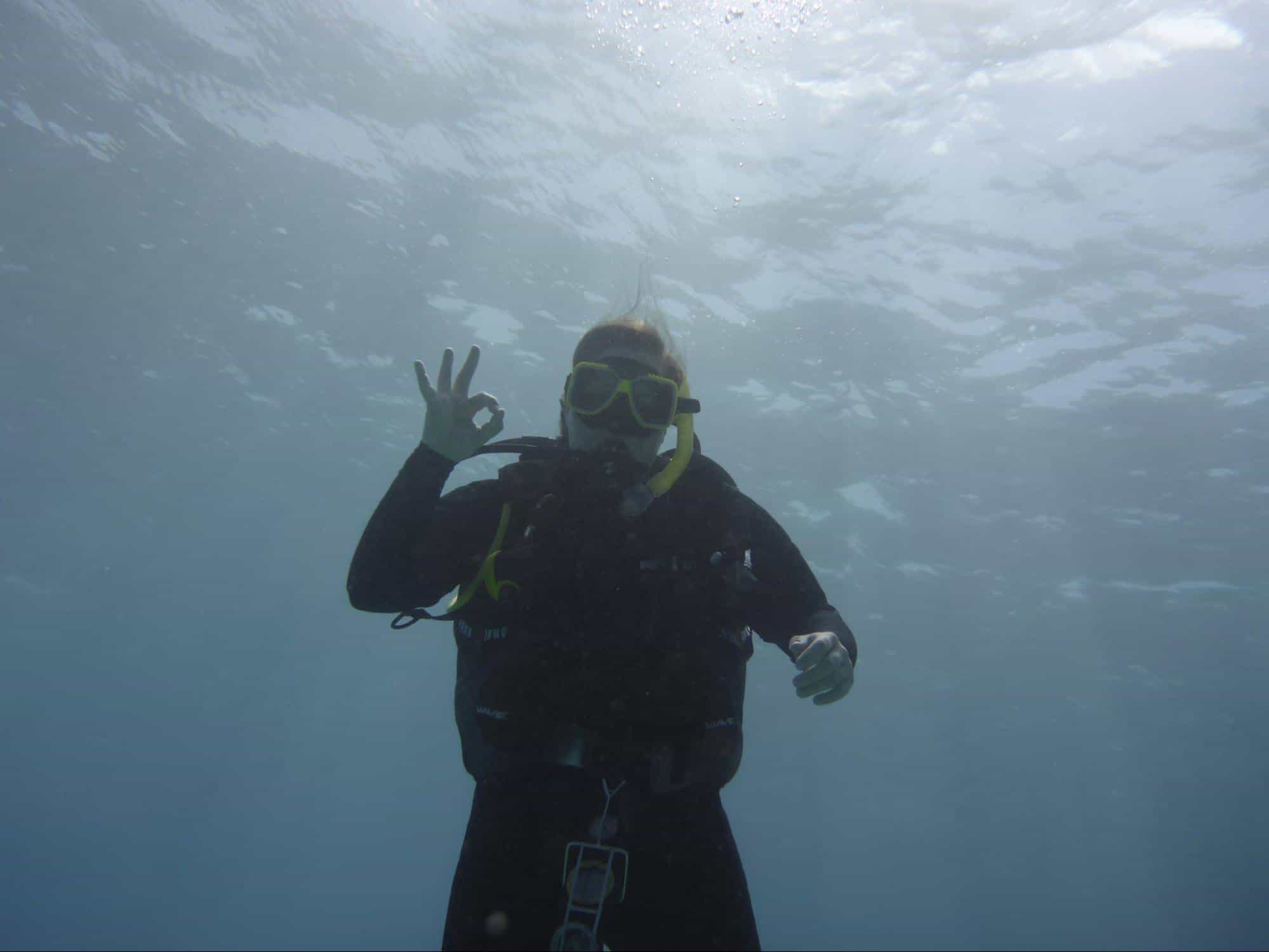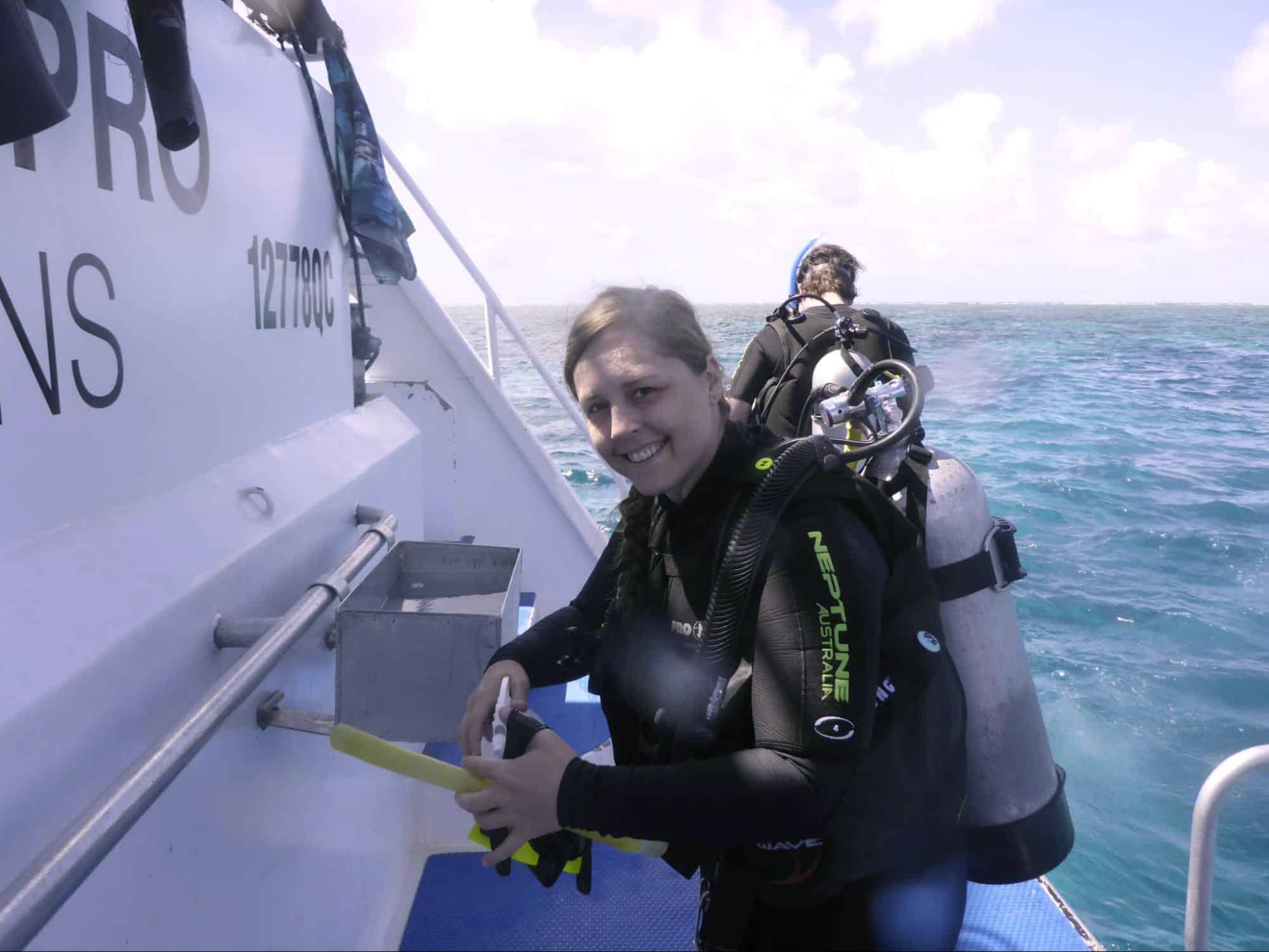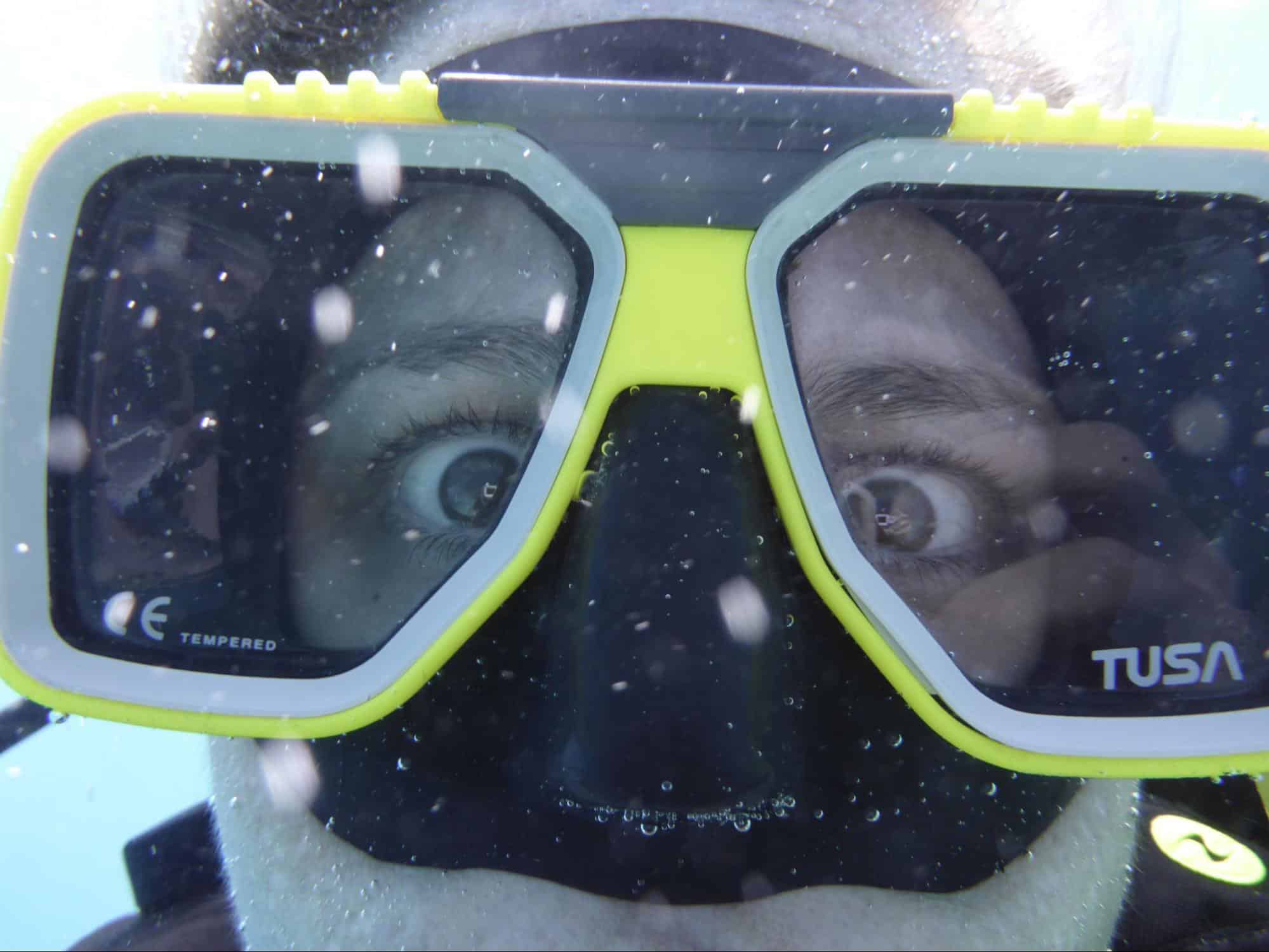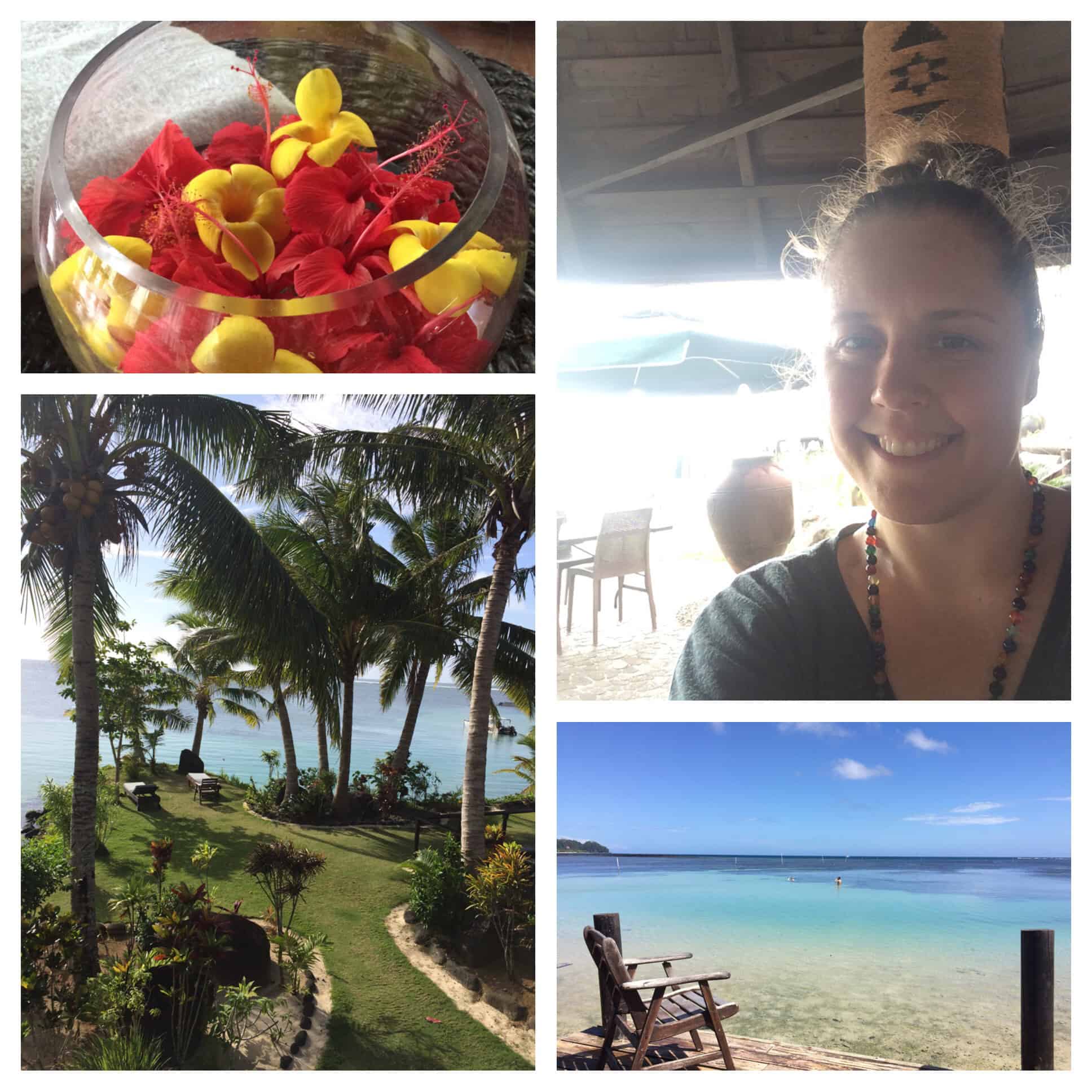This blog is part of the Living Without Limits series featuring conversations with CIM community members who engage in fun, challenging, and adventurous activities and careers. This post highlights Julie De Vos who shares her experiences scuba diving with type 1 diabetes.
Eleanor: First, could you tell me a little bit about your diabetes story?
Julie: I was diagnosed in the early 90s—I want to say 1990. Way back then, we had a very fun way to test our blood. You had to put your blood on a strip—a lot of blood—almost 5 of today’s blood drops. Then you waited for 3 min, wiped the blood off, and matched the color. How old school! Then we got glucometers, but it was pretty basic. I took my insulin, and only checked my blood sugar once or twice a day. Because with that old method, how do you do that in school?
Now there’s a big movement to say, “you can do anything with diabetes”, but that wasn’t even part of the conversation at that time. We just carried on with life and did stuff. I wanted to take up ski racing, and it was more like if I wanted to do something, my parents just figured out how to make it happen.
What made you interested in scuba diving?
My mom scuba dived when she was younger. At first, I said, “I don’t think I can with diabetes”. Because that’s just the way it was for a long time.
But then my sister and I did a backpacking trip in Africa. While we were there, we did this ocean safari and snorkelled with whale sharks. It was the coolest experience ever. I kept swimming deeper and deeper, but it wasn’t deep enough! I wanted to go even deeper. My sister was a certified diver and she wanted to scuba dive there, and I was like, “I want to scuba dive too!”

Julie scuba diving
What was the process like for getting started?
In Africa, things were less rigid. They said I had to get a doctor’s note, just to show that I was healthy and managing my diabetes. I hitched a ride to a private doctor in town, made an appointment, and told him I wanted to go scuba diving and needed to be signed off by a doctor. He asked me if I was using insulin and I said, “Yeah, I’m on an insulin pump.” He got really excited because he had never seen an insulin pump in real life before, only in textbooks. I showed him the insulin pump, dazzled him with all my information, and got the paperwork. I didn’t really have to do anything else. Then I signed up to take my open water course. The place where we took it was pretty extreme. There was a huge, 6 m swell. It was very scary.
When I went to Australia, I got my advanced diving certification. We did something called a “liveaboard” which means you go out on a boat for 5 days and all you do is dive. It’s so awesome, I can’t wait to do it again. I had to have my endocrinologist fill out a certain form saying I was fit to dive and I brought it with me. In a lot of places now, you have to have a special dive doctor fill it out after doing specific tests. It honestly just depends on where you go and where you dive. Some places won’t even take you if you have diabetes because of their insurance–there’s higher risks of something happening. Some places don’t really care, especially if you’re already certified and done a lot of dives. They know you are well trained and probably are already pretty aware and know your body.
Do you find there is a stigma against people with diabetes scuba diving? Before you started, did you know of anyone with diabetes that was diving?
Diving was kind of under the radar for people with diabetes. There were people with Type 1 who were diving pretty consistently, but they weren’t really talking about it. They were doing it quietly, so to speak.
There was more stigma before, when it actually wasn’t allowed. They also just didn’t know how going to deeper levels would affect people. But they realized it’s safe, and the biggest issue is basically hypoglycemia.
It’s totally do-able for folks. There are some rules—you can’t do any overhead dives into caves because if you have a low, you might not be able to get out quick enough. Having an A1C below 9 is really important. If you have complications, such as unmanaged or untreated retinopathy, high blood pressure, chronic kidney disease or later stages of kidney diseases…things like that can be a problem. You can do it with retinopathy and some complications as long as it’s managed and your doctor says it is okay.
What kind of considerations did you have to take into account diving with diabetes?
Devices
For me, I was on an insulin pump and disconnected from everything. Being on a pump is a lot more difficult to dive, especially if you’re doing multiple dives. On the ‘live aboard’, I was on a pump and it was really hard. We were doing 2-3 dives a day, which means you’re disconnecting a lot. One day we did 4 or 5 dives, and by the last one, I couldn’t go. My blood sugar was 20 mmol/L and I was trying to catch up with all the missed insulin. If I was to do that again, I would go back on long acting insulin. I would probably do a 20% basal dose so I always had some in my system, then connect back up to my pump. I would do that mixed approach, because it’s really hard to catch back up.
Now for a single dive, I use my CGM. I want to be in range, in my happy place, a little bit higher. The Dexcom G4 and G5 was easier because you could pop the transmitter out and put it back in on the same sensor. It’s really hard to do that with the G6.
BG Management
I kind of had to play it by ear because at the time, there wasn’t really a diving protocol. I had some hard and fast rules with myself—I wasn’t going to go in if my blood sugar was under 8 mmol/L. Generally speaking, I wanted to be around 12 mmol/L. For most people, that’s pretty high. But for the situation, you’re working pretty hard so I wanted to make sure I had that buffer. Often what I would do is make sure my blood sugar was a bit higher, and have a snack before I went in. Then I had a testing regimen leading up to when I went in for the dive. So I would test an hour before, half an hour, 15 min., 10 min., and 5 min. For those 15, 10, and 5 min., if my blood sugar was dropping rapidly or below where I wanted it to be, I wouldn’t do the dive. If it was skyrocketing, I wouldn’t do the dive either because I would be disconnected. This was before CGMs. I guess I developed that kind of process earlier on in my life through swimming and ski racing.
You also don’t want to have any extra insulin on board, because it is more active. It’s more strenuous than you realize it is. That was tricky. You have a log book, where you log all your dives and all the information. I also use that to log my diabetes information. In the same way you track the different weights you use, I also tracked the different strategies I was using to manage my blood sugars.
Hypos
I bring a goo with me in my BCD (Buoyancy Compensator Device) for an emergency. If I thought I felt low, I could take my regulator out, squirt it in my mouth, swallow, and put my reg back in. Knock on wood, I haven’t needed it before. I’ve been very, very careful and like to run a bit higher because it is safer. First I brought candies, but that was a bit of a choking hazard. The goo I can use in one swallow without having to worry about chewing or it being destroyed.
It’s a little bit scary, because for me, some of my symptoms are I’ll start to sweat or shake a bit. And it’s really hard to feel those symptoms under water! There was one time where I thought I might be hovering kind of low-ish. When I came out of the water, I was 4.2 mmol/L. That was after almost a 75 min. dive. That’s a long time. It was also more of an active dive than what we normally did.
I’ll bring glucagon on board with me. My buddy is the most important person in my dive team. Usually there’s a dive master with us and I tell them, “Hey I have diabetes, my dive buddy knows what to do.” I tell them there’s glucagon on board, and explain how to use it. I understand people not wanting to say anything so they don’t get turned away. But for my own safety, I want people on the boat to know I have diabetes so they know what to do. Also, if I come up and I’m low, it’s good for people to toss me fruit snacks and know where everything is.
I also have special symbols for when I’m under the water. I’ll make an L and D with my hands for “low” and “diabetes”. There’s also a symbol that means you’re not feeling good that I use.
Where did you receive support, knowledge, or resources from to help you pursue scuba diving?
Around 2010, a group called DAN did research and developed a diving protocol for people with Type 1. Check out their Guidelines for Diabetes and Recreational Diving.

DAN “Diabetes and Diving Infographic”, Guidelines for Recreational Diving with Diabetes
PADI also has all the forms you need to get started.
What is your favourite thing about scuba diving?
It’s really relaxing. If I could scuba dive all day long, I would. It’s kind of like exploring an entirely different world. I’ve seen some incredible outcroppings, coral reefs, caves, and drop-offs–things you can’t see on land. It’s like going to outer space, but on the Earth. I love the ocean, I love the water. Everything about it I love. You’re exploring this unknown world not many people get to experience. It’s really sad that a lot of the coral reefs are getting destroyed—it’s like a race against time for a lot of folks to see them. Once they’re gone, they’re gone. I’m glad we went to Australia when we did.
I’ve gone to some pretty cool places, and there’s so many more spots. I want to see the Red Sea, and the Dead Sea. Even in one area–the Great Barrier reef has thousands of dive spots.
Do you have any advice or recommendations for people with diabetes interested in scuba diving?
If I could give anyone advice if they want to try it, I would say go somewhere warm and where the water is clear. Start with snorkeling and see if you like it, though I would say snorkeling is quite different.
You can do part of the courses here, in Canada. They start off in the pool, so it’s safe. Then you have to do an open water dive. Tobermory is beautiful and clear, and you can see shipwrecks. I would recommend that to folks. It’s safe, there’s no creatures. But, the water is very cold! It’s freshwater and you need to wear the thickest wetsuits they have.
It’s like any sport really, right? Cutting back your dose vs. having some snacks, knowing how you feel, what the water temperature is like, what type of dive it is, whether you’re doing multiple dives in a row, what kind of activity you did the day before. It’s all about being prepared and knowing your body and giving yourself permission to say “I’m not going to do this dive because I think it might not be safe”. Because you’re also responsible for your buddy as well.
When I did it, I didn’t know anyone else that was doing it. I just sort of made up my own protocol, but the DAN links are great. Also, talking to people with diabetes who have done it before will really help. If someone is interested, reach out to community members! Post in the group, ask questions. If anyone has any questions, they can reach out to me on Facebook and Instagram at @jadevos.
Is there anything else you would like to say to folks living with diabetes and maybe feeling like they can’t pursue certain activities or interests they have?
You want to be prepared, that’s the biggest thing. No matter what you’re doing, just prepare. Make sure you know your body, plan for the exercise you’re doing. Make sure you have doubles and triples for everything you need and that the people around you know you and support you. Diabetes aside, your diving buddy is there to save your life and you’re there to save their life. It’s the same with diabetes, if you have someone around you that understands, that’s pretty key.
Do what you want to do, and make the plans to do it!







